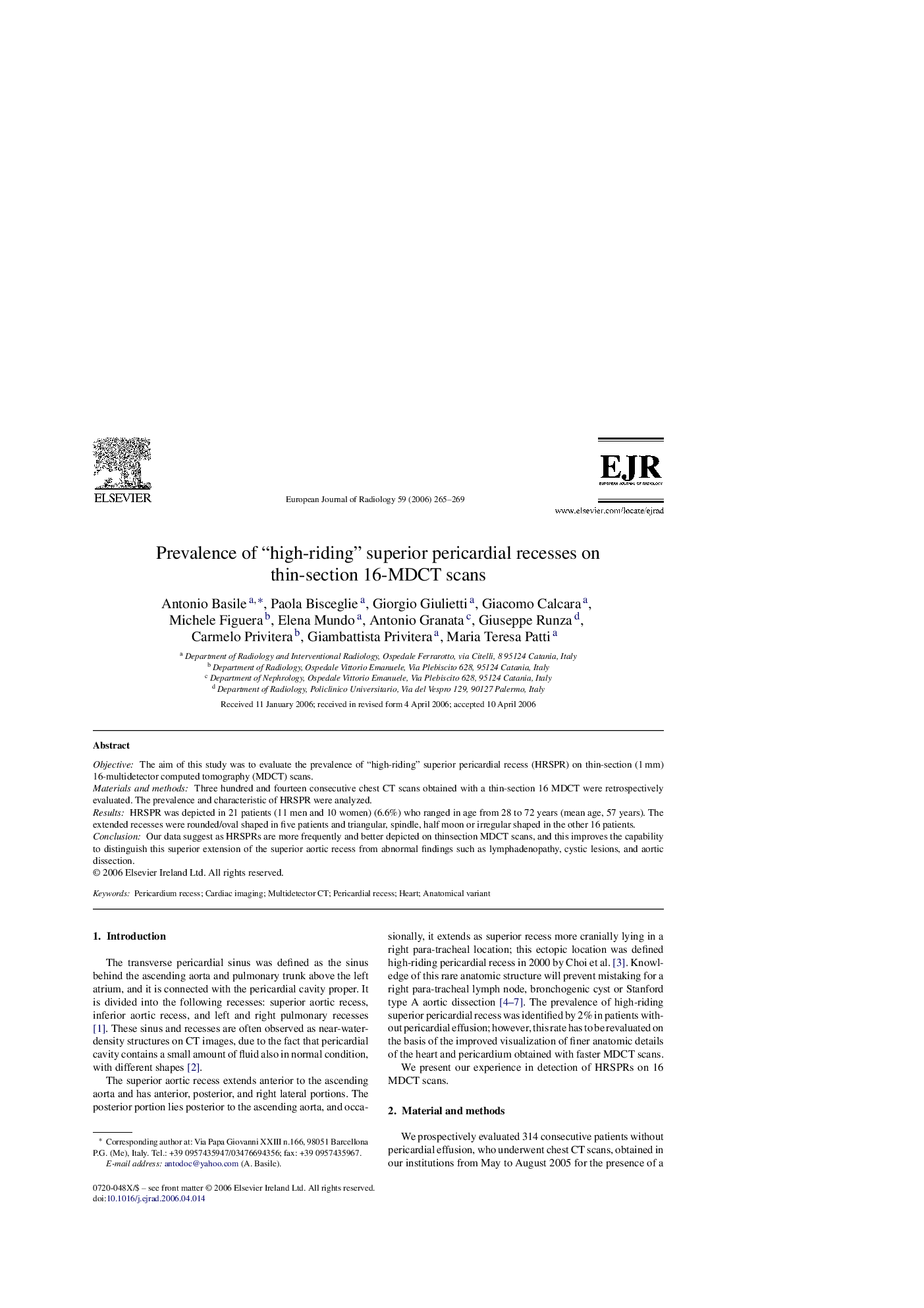| Article ID | Journal | Published Year | Pages | File Type |
|---|---|---|---|---|
| 4228715 | European Journal of Radiology | 2006 | 5 Pages |
ObjectiveThe aim of this study was to evaluate the prevalence of “high-riding” superior pericardial recess (HRSPR) on thin-section (1 mm) 16-multidetector computed tomography (MDCT) scans.Materials and methodsThree hundred and fourteen consecutive chest CT scans obtained with a thin-section 16 MDCT were retrospectively evaluated. The prevalence and characteristic of HRSPR were analyzed.ResultsHRSPR was depicted in 21 patients (11 men and 10 women) (6.6%) who ranged in age from 28 to 72 years (mean age, 57 years). The extended recesses were rounded/oval shaped in five patients and triangular, spindle, half moon or irregular shaped in the other 16 patients.ConclusionOur data suggest as HRSPRs are more frequently and better depicted on thinsection MDCT scans, and this improves the capability to distinguish this superior extension of the superior aortic recess from abnormal findings such as lymphadenopathy, cystic lesions, and aortic dissection.
